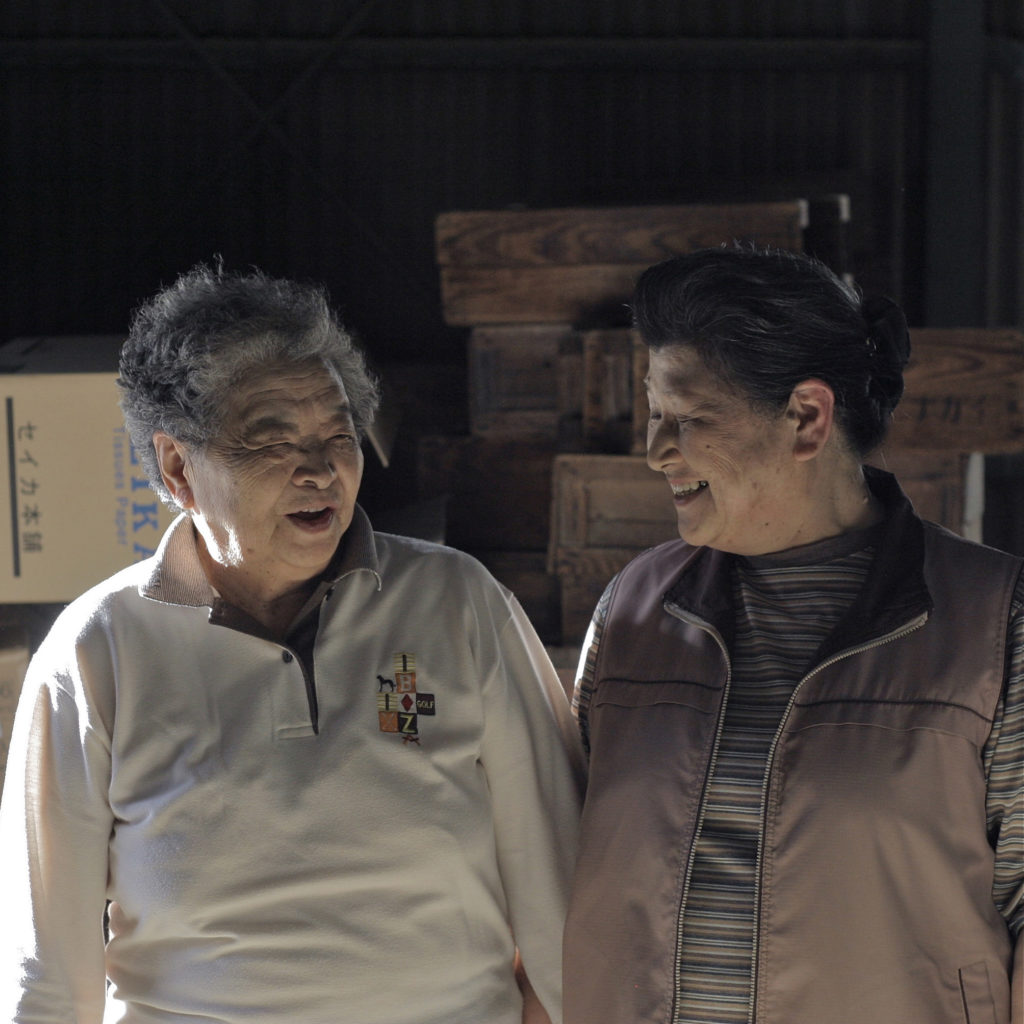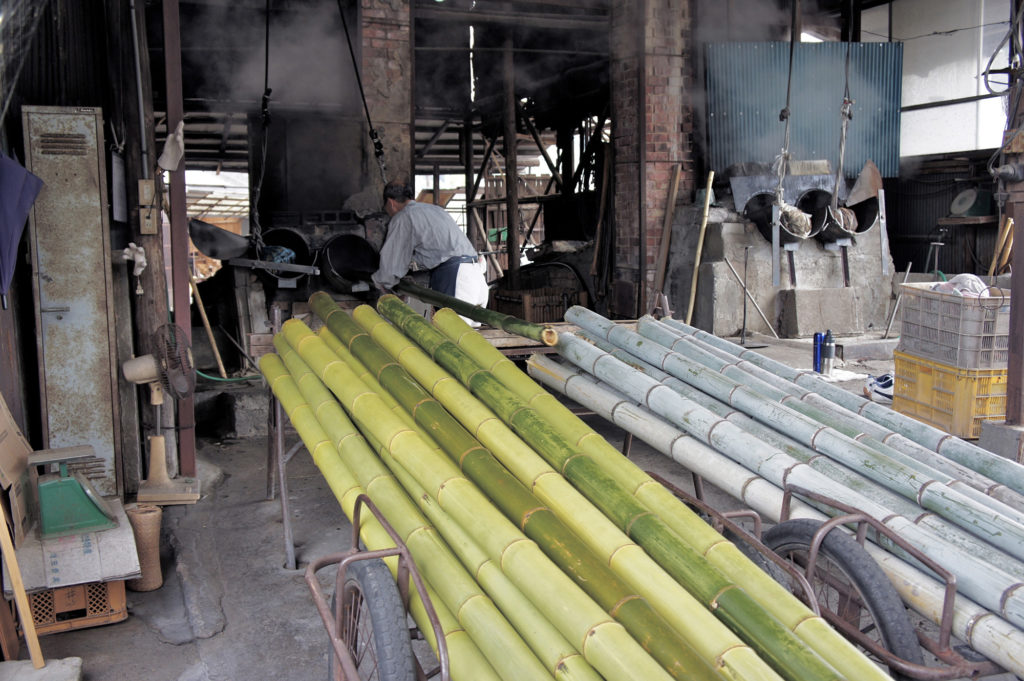Story 02 | First the fire, then the flowers
“All the workers here are old people from this area.” Kimiyo Nagai is also speaking about herself, she is 82. Born in Beppu in the 4th year of the Showa period, she is the fourth president of ‘Nagai,’ a hundred year old Bamboo processing factory on the foothills of the mountains behind Beppu city. “Young people don’t do this kind of work anymore,” she says, “it’s too hard for them, it’s just the old guys working who still have the skills.” Nagai was, and still is, an essential part of Beppu’s bamboo industry. They take the raw bamboo, cut from bamboo groves on the mountains of Beppu, and process it for use by craftsman.

There are over 550 species of bamboo, but the one used here is known as Madake (Phyllostachys bambusoides, often colloquially referred to as ‘giant bamboo’ since its thick stems grow anywhere from 20-60 feet high). “I began work here in 1954 when I was 25, and after marrying I lived with my husband in a room at the factory.” She is still here, working now from a desk at the entrance to the factory. Bamboo dust covers the floor of the factory itself and towering culms lie under tin-roofed warehouses, or against the walls, drying in the afternoon sun. The factory performs two roles, to prepare the bamboo for use (by boiling the oils out of the culms and drying them ivory white) and by making simple items out of the dried bamboo.
Although the golden age of Beppu’s bamboo industry ended with the crash of the Japanese economy in the late 1980s, Nagai has been struggling since the end of World War II after a string of misfortunes. In 1965 the factory caught fire and everything was lost, “then after that, all the Bamboo forests died.” Bamboo flowers once every 60-120 years, and after each flowering the forests will dry up and die. “For ten years it was a very hard time for us, a decade of trouble.” During that decade of trouble, Nagai was forced to use their stocks and make their own products, such as spoons, yakitori sticks or sake cups. “In the sixties we had over 100 workers here, but we have only 24 staff now. No young people. Sometimes young people come to work in the factory but it’s hard work for them, so they soon quit.” Walking through the factory, between huge stacks of Madake, you can see small groups of elderly workers, quietly cutting, slicing, cleaning and drying the bamboo culms; preparing a material which people “don’t need anymore,” as Kimiyo says. Perhaps they are the only ones who can still see bamboo as an important cultural and religious material, one connected with birth and death for thousands of years in Japan.
< PAPERSKY no.41(2013)>












